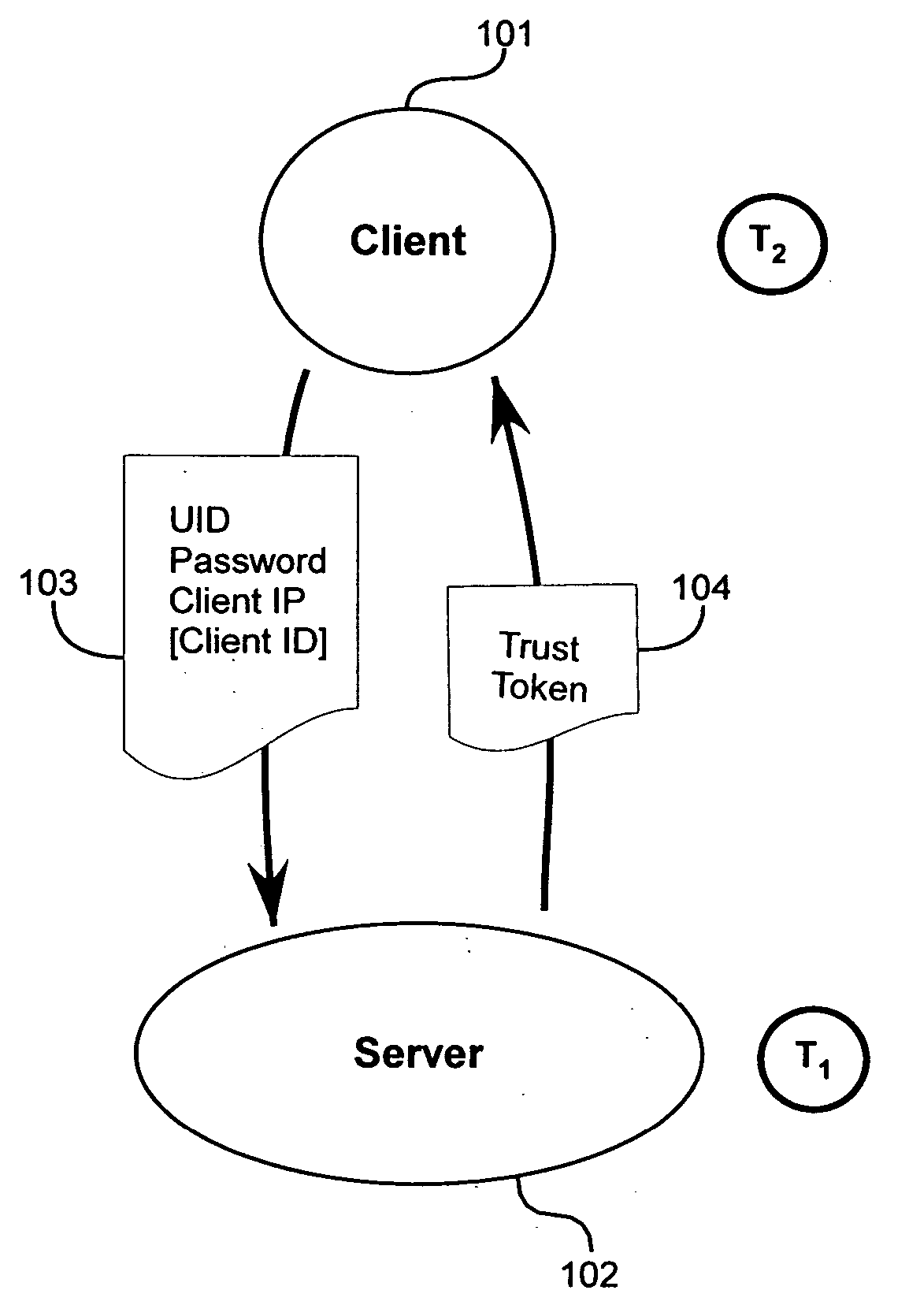Method and apparatus for trust-based, fine-grained rate limiting of network requests
- Summary
- Abstract
- Description
- Claims
- Application Information
AI Technical Summary
Benefits of technology
Problems solved by technology
Method used
Image
Examples
Embodiment Construction
[0036] As shown in FIGS. 1 and 2, a user of a client machine 101 requests network access or services from a server 102. It will be appreciated that each client 101 has a distinct IP address, denoted by IP1-IPn. When a client directs a request to a server directly, without the interposition of any intermediary devices, as in FIG. 1, the server 102 is readily able to discern the source IP address. Often, however, the client 101 sends its request to the server 102 from behind a proxy server or firewall 103, wherein the proxy / firewall 103 has a distinct IP address, for example “1.160.10.240.” There may be many users and many machines behind the proxy / firewall 103, all directing requests to the server 102. The fact that all of this traffic originates from behind the proxy firewall 103 has the effect that all of the traffic, even though it originates from many different users and many different machines, is seen by the server 102 to originate from the same source IP address, that of the p...
PUM
 Login to View More
Login to View More Abstract
Description
Claims
Application Information
 Login to View More
Login to View More - R&D
- Intellectual Property
- Life Sciences
- Materials
- Tech Scout
- Unparalleled Data Quality
- Higher Quality Content
- 60% Fewer Hallucinations
Browse by: Latest US Patents, China's latest patents, Technical Efficacy Thesaurus, Application Domain, Technology Topic, Popular Technical Reports.
© 2025 PatSnap. All rights reserved.Legal|Privacy policy|Modern Slavery Act Transparency Statement|Sitemap|About US| Contact US: help@patsnap.com



